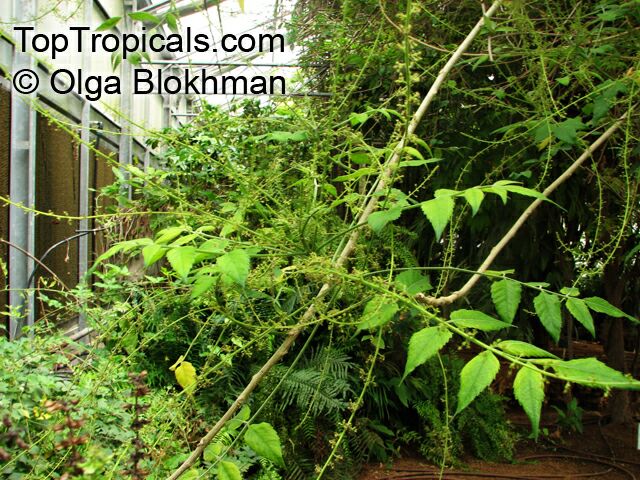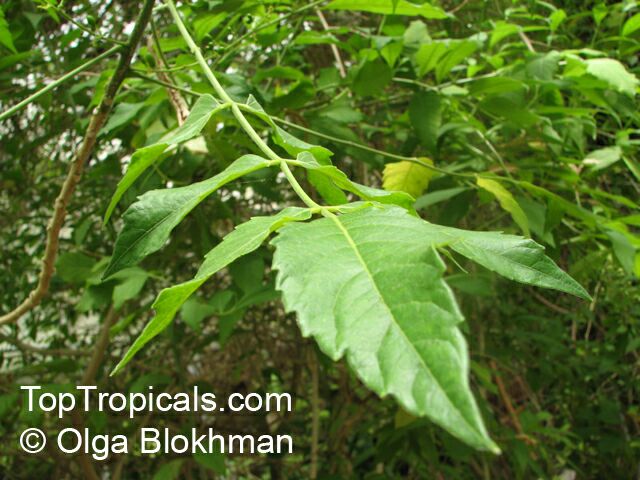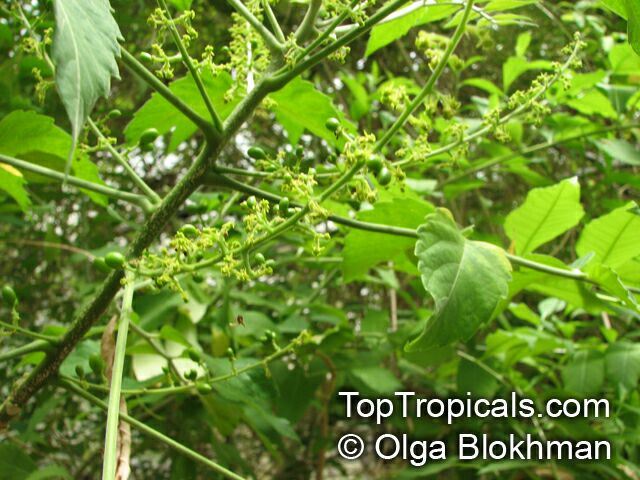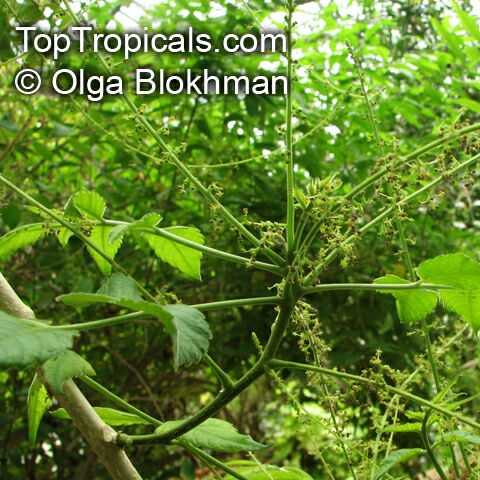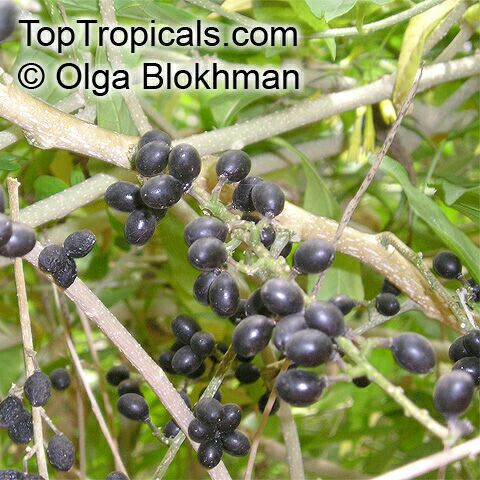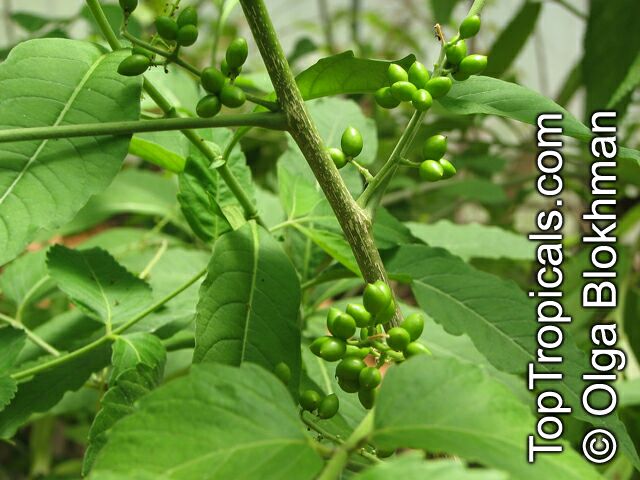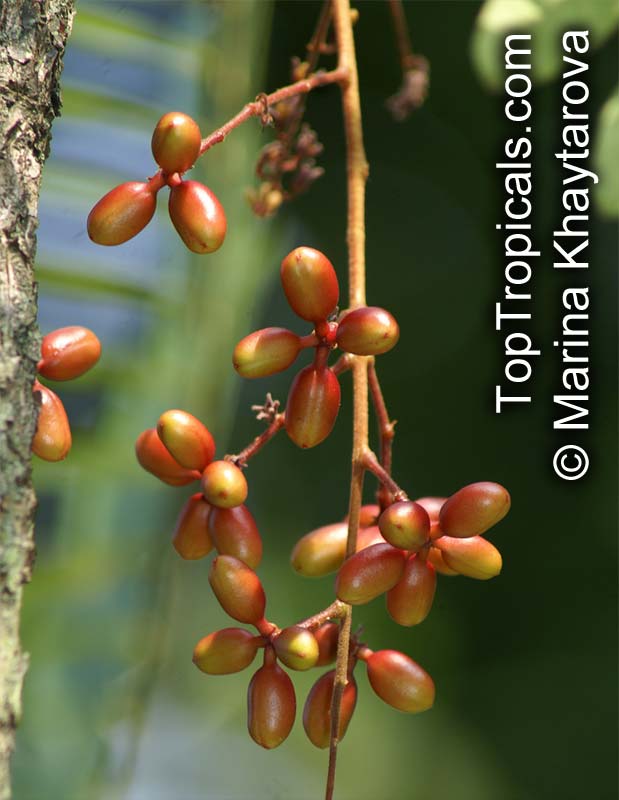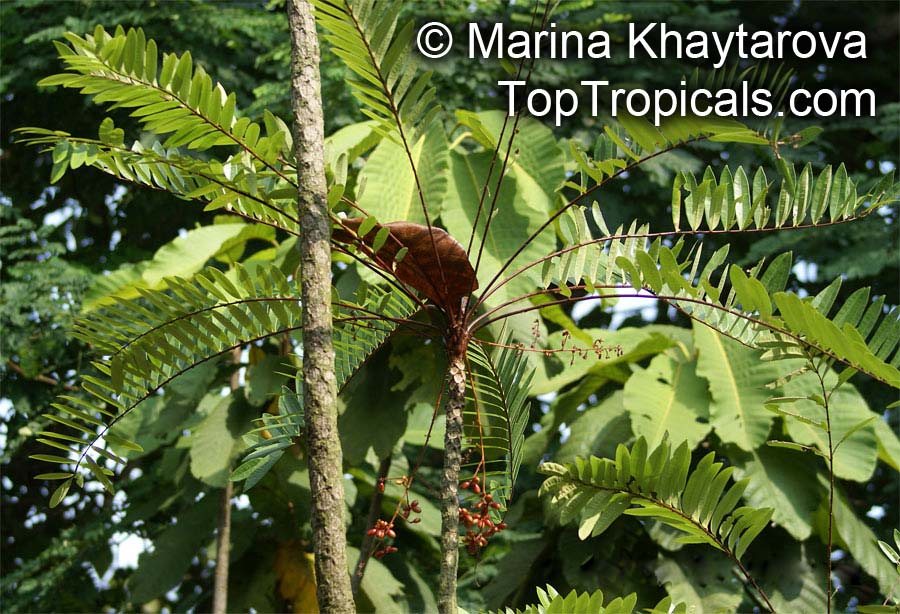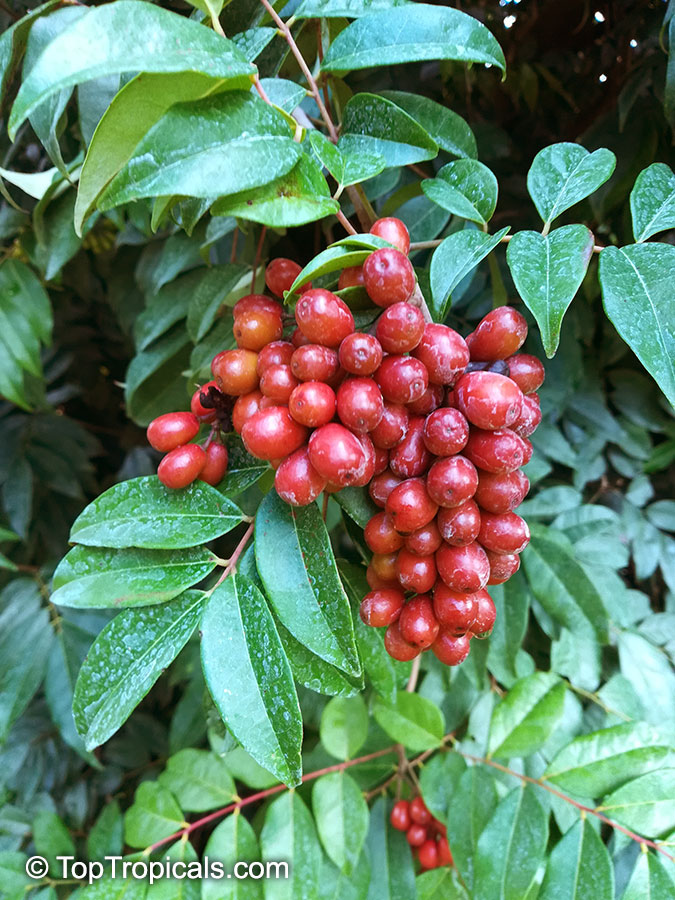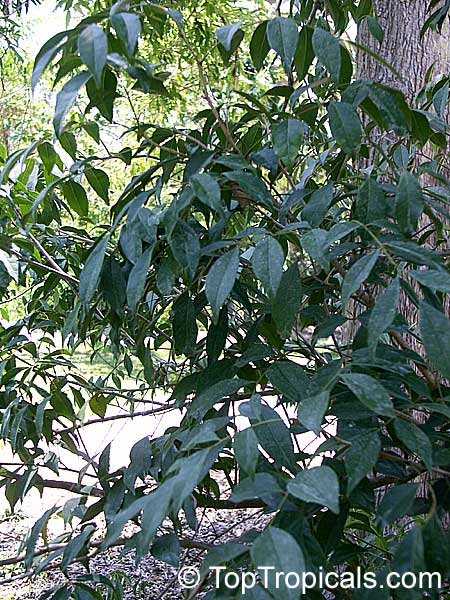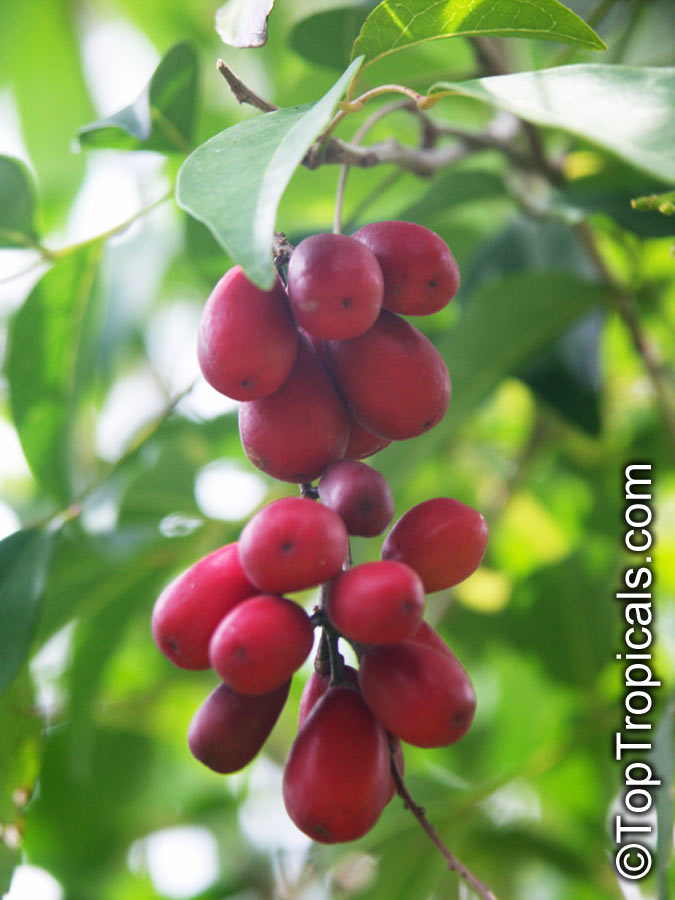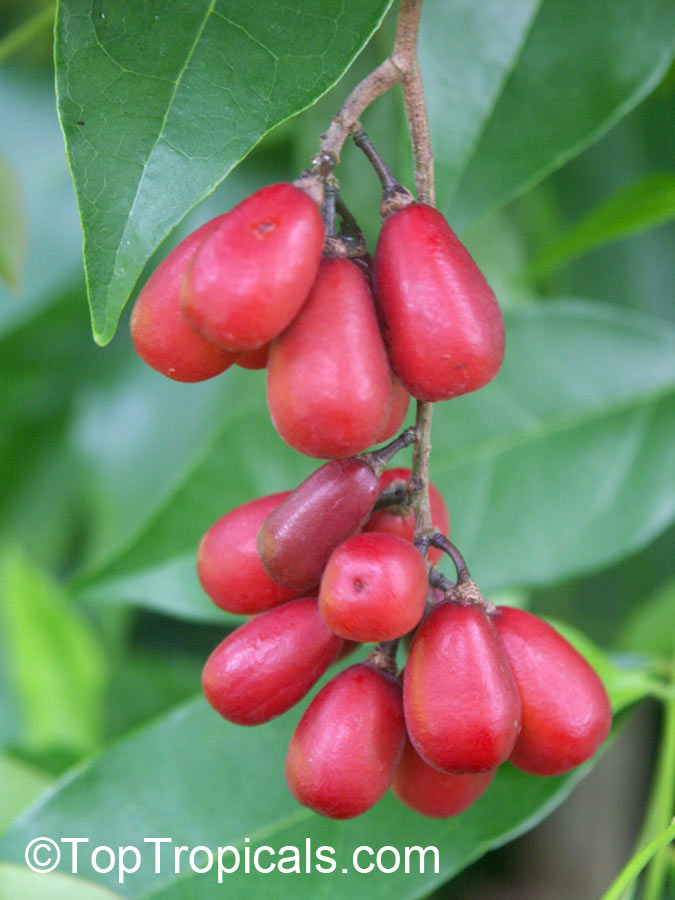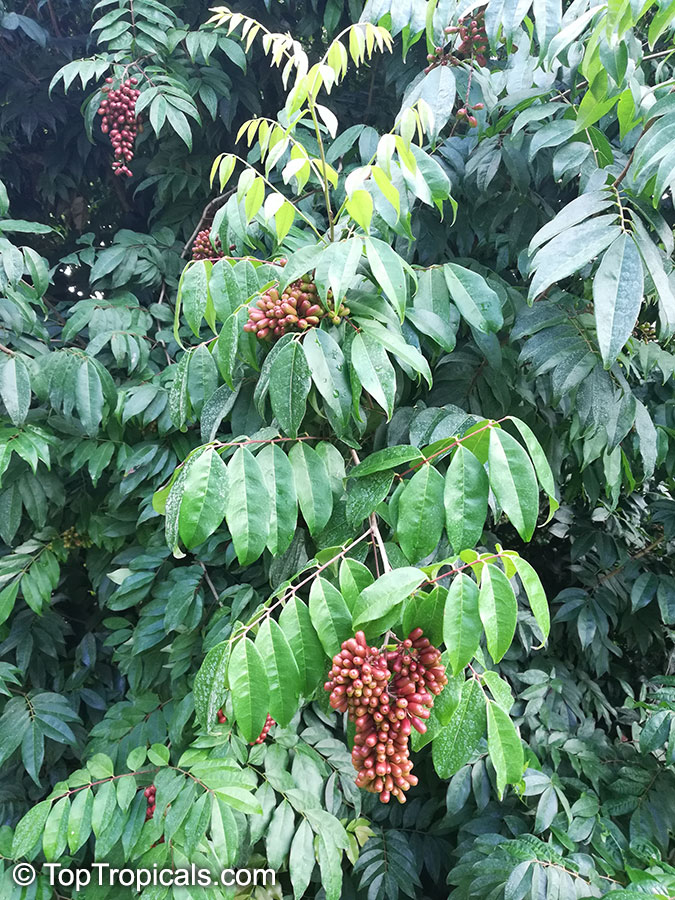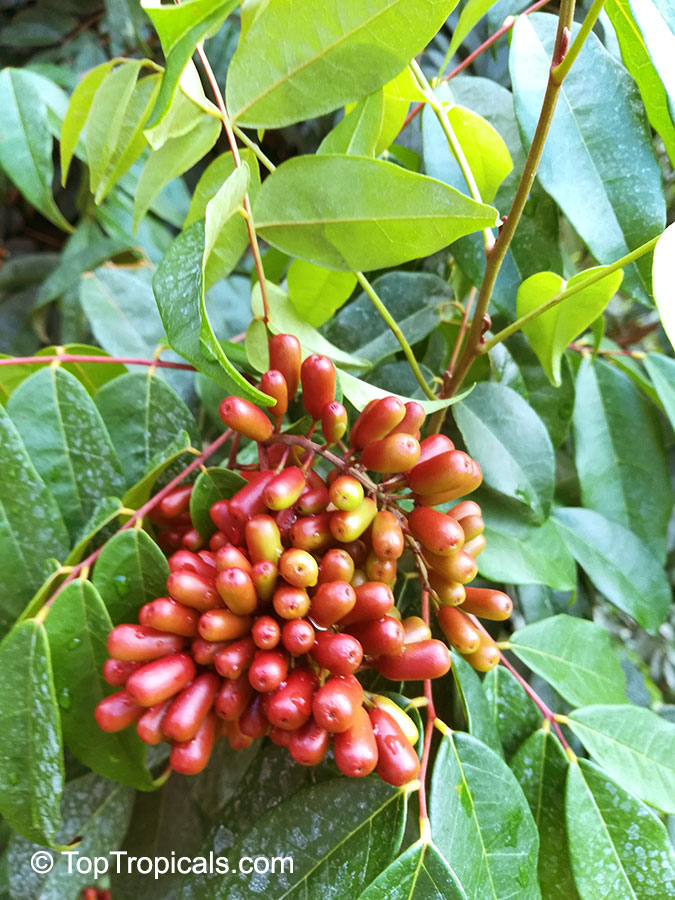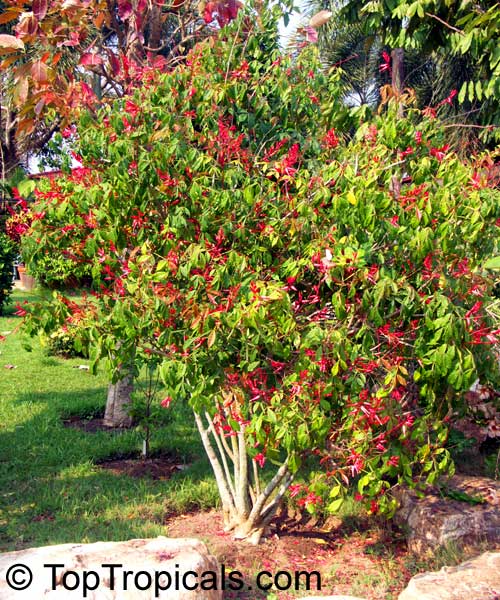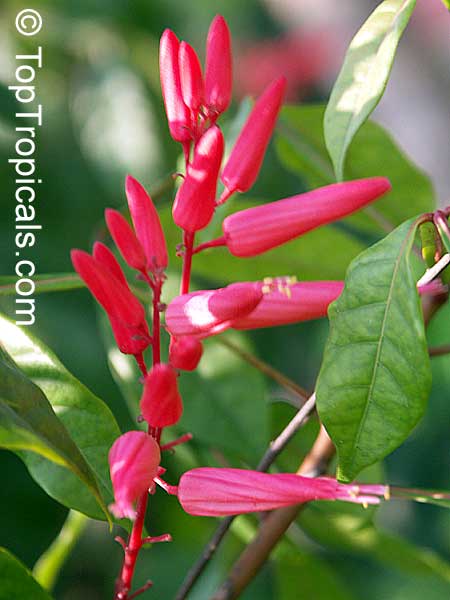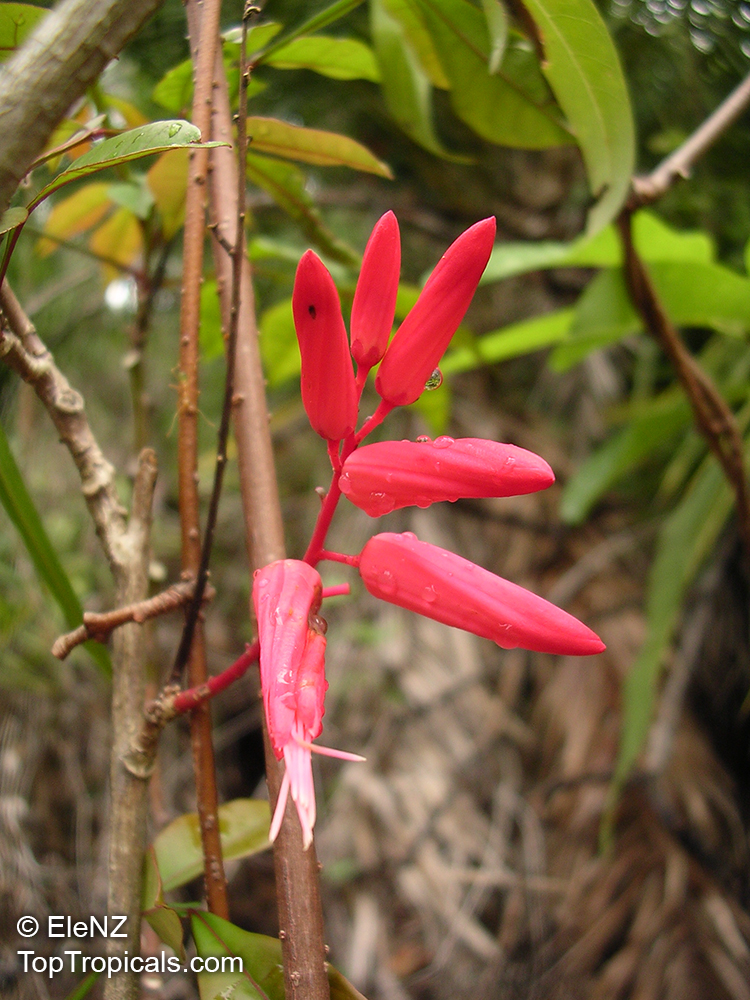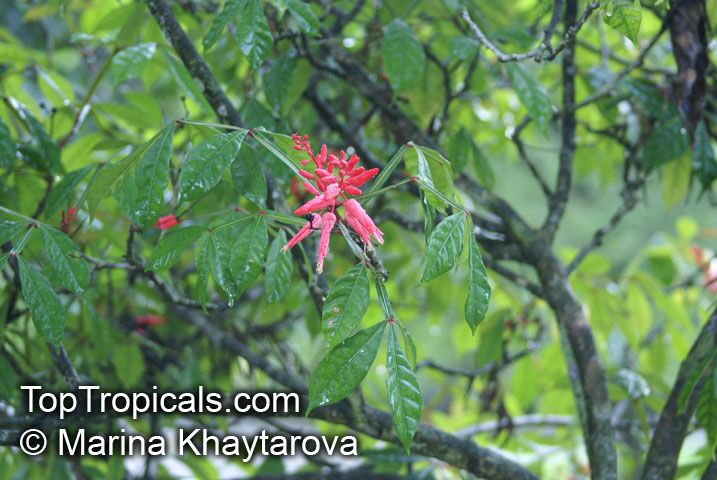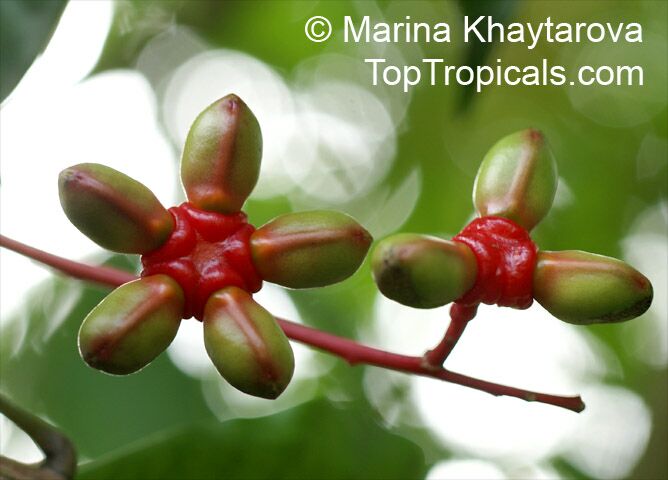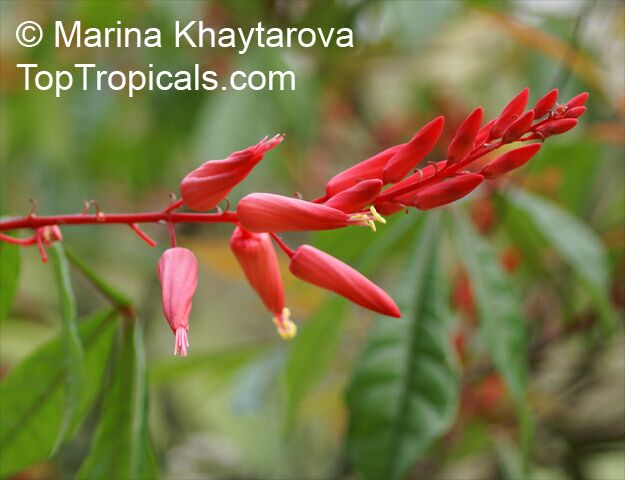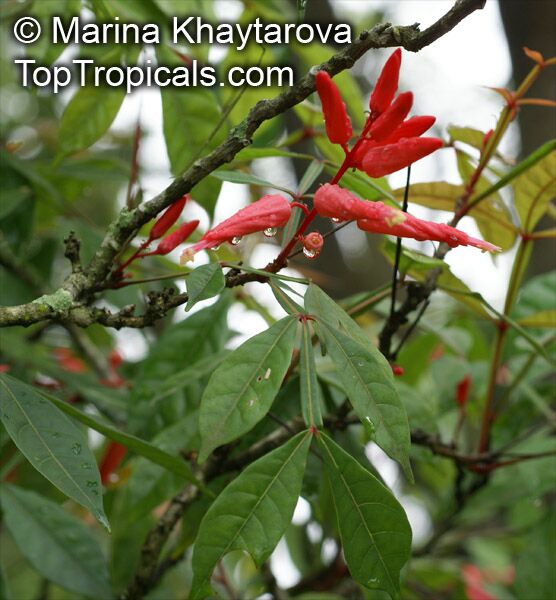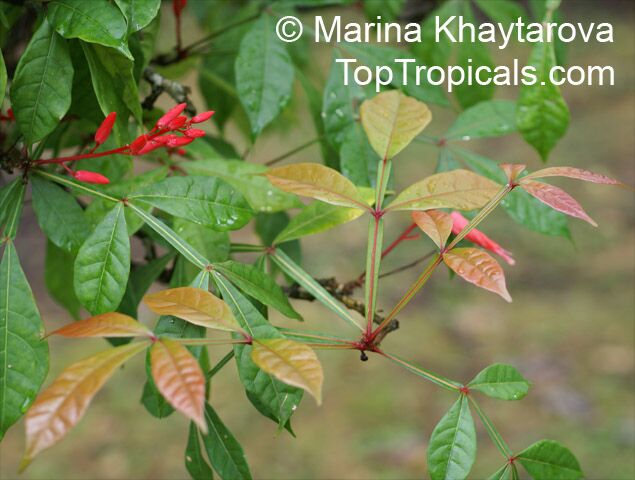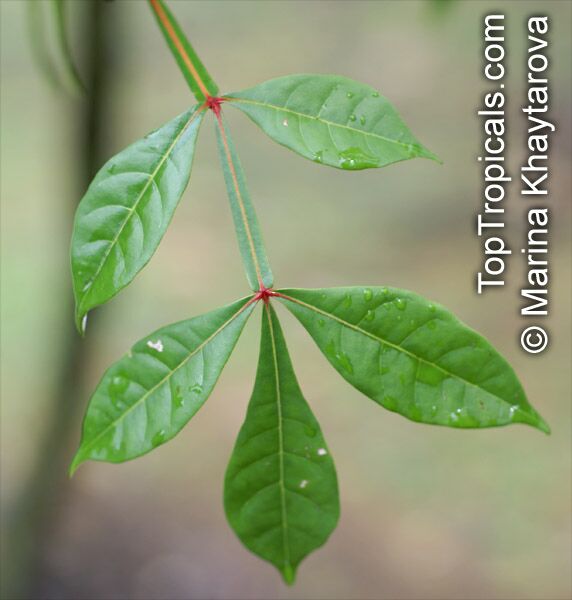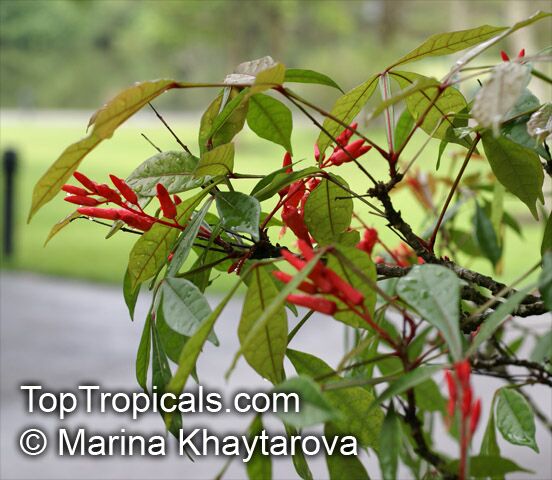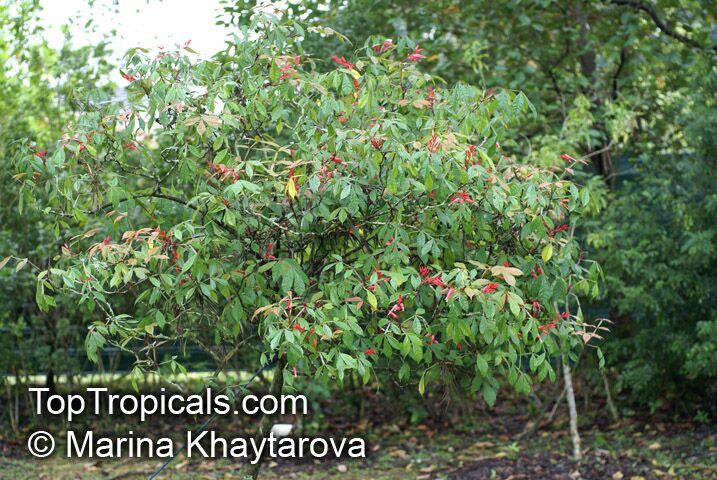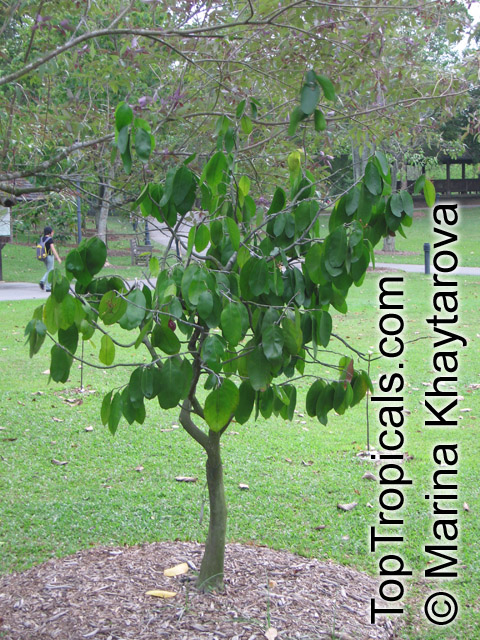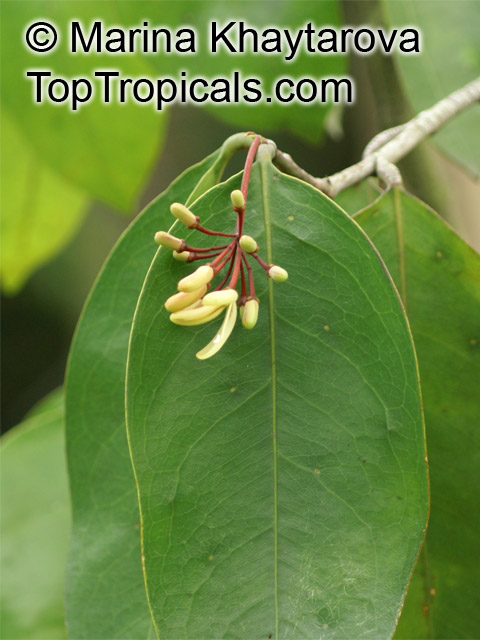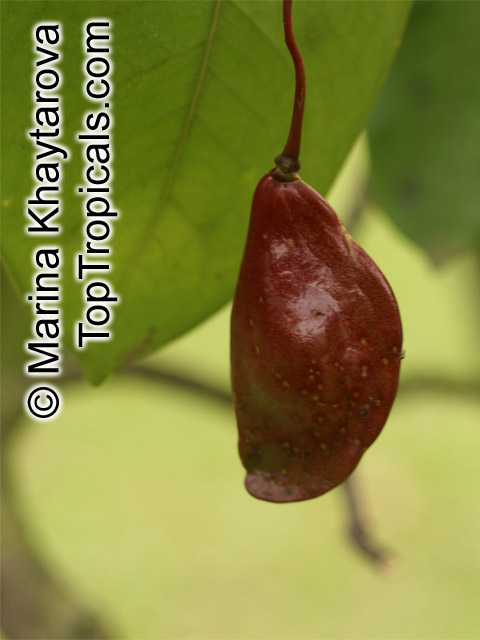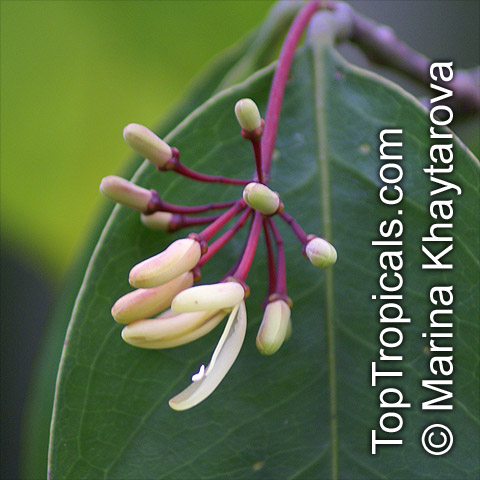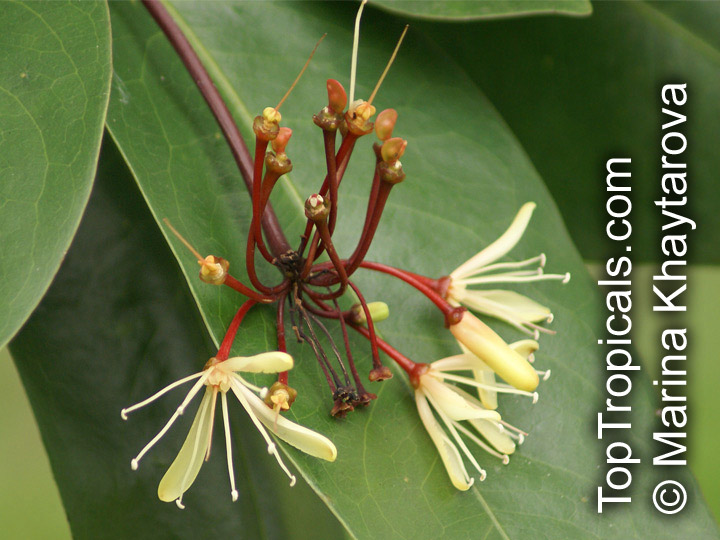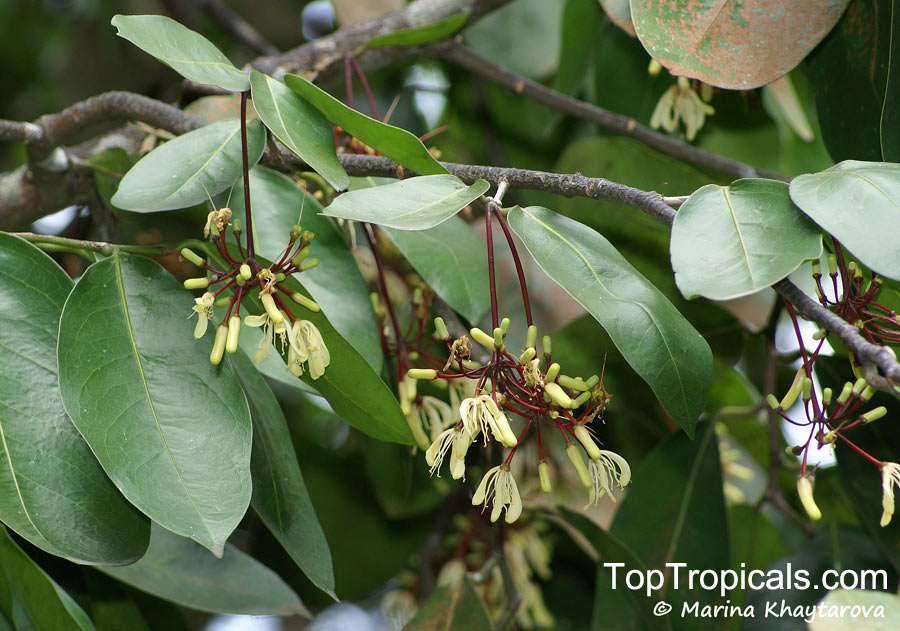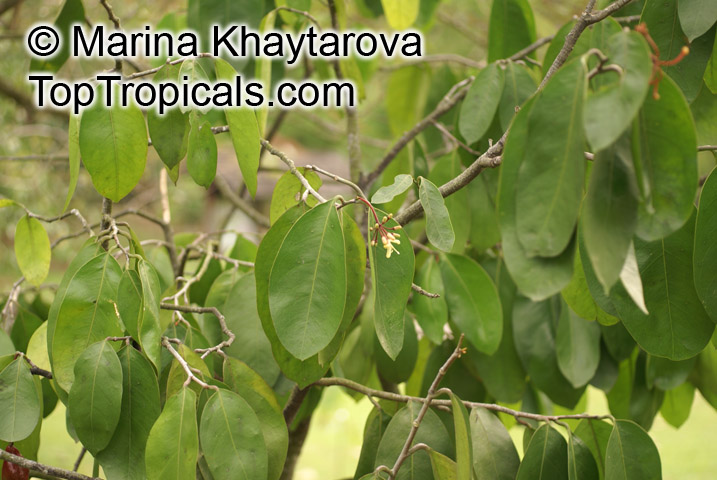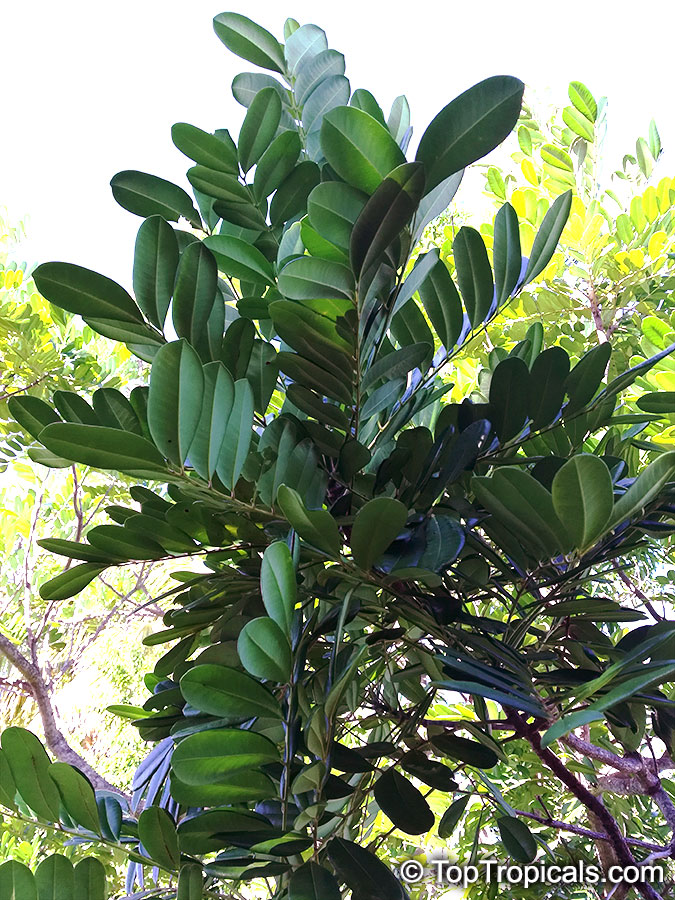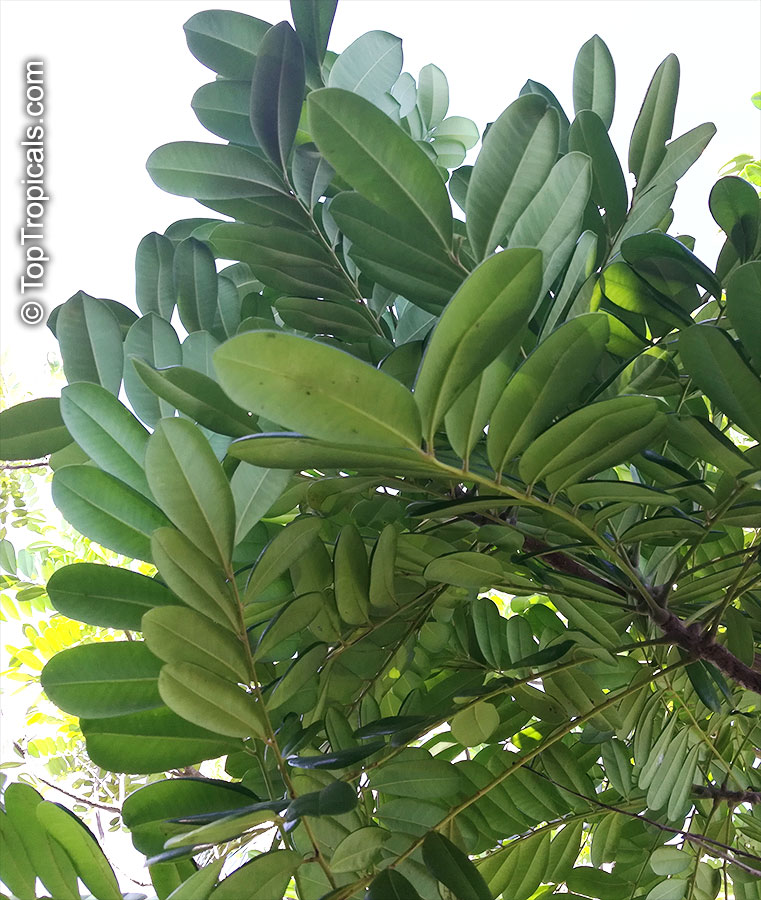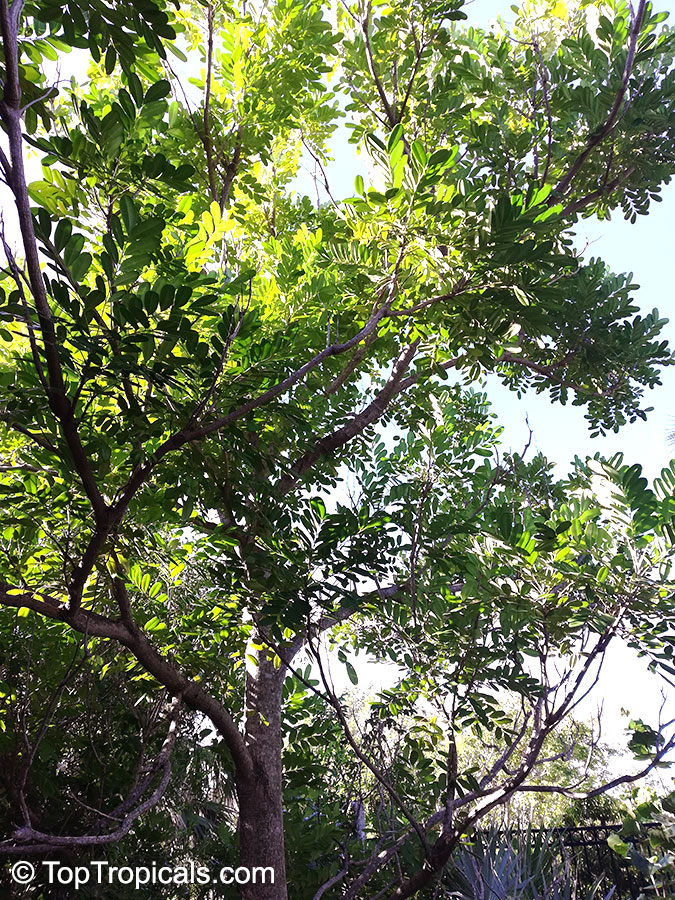Simaroubaceae - Botanical Family
Top Tropicals Plant Encyclopedia
| Number of plants found: 7 |
Botanical name: Alvaradoa amorphoides
Common name: Mexican alvaradoa
Family: Simaroubaceae
Origin: Tropical America






Alvaradoa amorphoides (Mexican alvaradoa) is a small tree native to Tropical America featuring starkly beautiful white, off-white trumpet shaped flowers. It grows to roughly 10-20 feet tall and bears beautiful blossoms that attract hummingbirds and butterflies in abundance. It prefers full sun but is somewhat tolerant of semi-shade, and it needs regular watering to keep it at its best.
Grown in USDA Zones 9-11, Alvaradoa amorphoides does best in warm climates in the ground, but it can tolerate being grown in a container in cold climates, when brought inside for the winter months. Container plants should be kept in a sunny place but should be protected from extreme temperatures. Because of its high water requirement, the soil for container plants should be allowed to dry slightly between waterings. Adequate drainage is essential, so be sure to use a potting soil meant for container plants. It is also a good idea to add a slow-release fertilizer to the soil at the beginning of each growing season.
In its native regions, Alvaradoa amorphoides can grow up to 30 feet, with deeply divided glossy green leaves. In colder climates, it is best to prune the tree annually, particularly if kept in a container. Pruning will help to keep the plant in a manageable shape and to prevent it from overtaking its space. Care should be taken to ensure that the woody stems of the tree are not damaged while pruning, as they are sensitive to frost.
Alvaradoa amorphoides can be a striking focal point in any garden, with its white-blossomed foliage and airy, drought-tolerant shape. With adequate water, full sun, semi-shade, and protection from extreme temperatures, it is sure to be a show stopper for years to come.
Botanical names: Brucea javanica, Brucea sumatrana
Common names: Java Brucea, Kusam Seeds, Macassar Kerneltree
Family: Simaroubaceae
Origin: Southeast Asia






Deciduous shrub bears purplish-black, fleshy bitter fruits having a solitary seed. Has been used for more than 2 centuries in Chinese medicine.
Botanical name: Eurycoma longifolia
Common names: Ali's Umbrella, Long Jack, Malaysian Ginseng, Pasak Bumi, Tongkat Ali
Family: Simaroubaceae
Origin: Malaysia, Borneo, Sumatra







Eurycoma longifolia is a small, evergreen tree with spirally arranged, pinnate leaves 20-40 cm (8-16 inches) long with 13-41 leaflets. The flowers are dioecious, with male and female flowers on different trees; they are produced in large panicles, each flower with 5-6 very small petals. The fruit is green ripening dark red.
The plant parts have been traditionally used for its antimalarial, aphrodisiac, anti-diabetic, antimicrobial and antipyretic activities.
Botanical name: Picramnia pentandra
Common names: Florida Bitterbush, Bitter Bush
Family: Picramniaceae (Formerly:Simaroubaceae)
Origin: South Florida





Picramnia pentandra, commonly known as Florida Bitterbush, is an evergreen large shrub or small tree found growing naturally in the South Florida (Dade county). It is a slow-growing plant, with a mature height of between 5 and 10 ft, though in ideal conditions can reach up to 20 ft.
The Florida Bitterbush is a versatile species. It does best in full sun, but is moderately tolerant of some shade and a wide range of soil pH and soil types. It is drought resistant, but will perform best if watered regularly. However, it is important to monitor soil moisture, as too much water can potentially cause roots to rot. This plant usually thrives in USDA Zones 9-11, and can be grown in containers in colder climates, and kept in a sunny spot indoors.
Given the right amount of care, Florida Bitterbush can be a beautiful and easy to care for plant. It requires minimal maintenance, and can expand to give a lush and full look to any garden.
Botanical name: Quassia amara
Common names: Amargo, Bitter Ash, Bitterwood
Family: Simaroubaceae
Origin: South America







Amargo is a small tropical tree, growing only 2-6m in height. It is indigenous to Brazil, Peru, Venezuela, Suriname, Colombia, Argentina, and Guyana. It has beautiful red flowers and fruits that turn red as they mature.
Throughout South America, amargo is a tribal remedy for debility, digestion problems, fever, liver problems, parasites, malaria, snakebite, and back spasms, it are used to stimulate the appetite and secretion of digestive juices, as well as to expel worms and intestinal parasites. In herbal medicine in the United States and Europe, amargo is employed as a bitter tonic for stomach, gallbladder, and other digestive problems (by increasing the flow of bile, digestive juices, and saliva); as a laxative, amebicide, and insecticide; and to expel intestinal worms.
Botanical name: Simarouba glauca
Common names: Paradise-tree, Dysentery-bark, Bitterwood, Lakshmi Taru
Family: Simaroubaceae
Origin: Central America






Simarouba glauca, a plant native to Central America, is a small tree that grows to between 10 and 20 feet in height. It is an ethnomedical plant, meaning it has traditionally been used in certain societies to treat a range of illnesses. The fruit of the Simarouba glauca is commonly eaten, although its quality is considered to be inferior. Recent research has proven the presence of a range of medicinally active compounds in the plant.
The Simarouba glauca is an easy tree to grow and can be grown in regions with USDA Zone 9-11. The tree grows best in full sun or semi-shade, whilst it is important to ensure regular water for the tree health. The tree should not be left to dry out for extended periods, as it needs regular and moderate water to remain healthy.
Simarouba glauca tree grown in colder regions is often grown in a pot. When growing the tree in a pot, the root ball should be watered consistently, but not given too much water as this can lead to the pot becoming soggy and cause the roots to rot. The tree should receive adequate sun to help with its growth and should be moved to a shadier spot during periods of extreme heat. During winter, the tree in the pot should be kept in a sheltered area to avoid frost or damage to the roots.
Use link to repeat this search:
https://toptropicals.com/cgi-bin/garden_catalog/cat.cgi?search_op=and&keyword_op=and&language=e&family=Simaroubaceae
&number=10&no_change_lang=1&user=tt&sale=1&first=0

